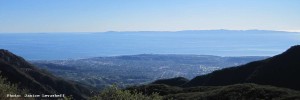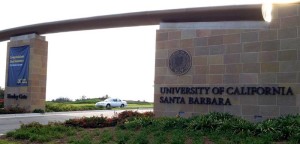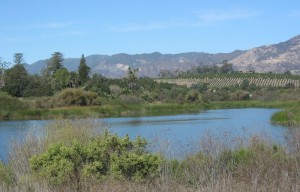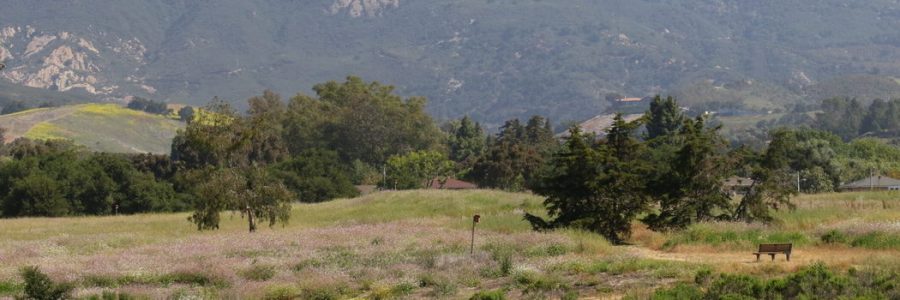The Conservation/Science Committee (ConSci) acts locally to advocate for strong protections for birds and bird habitat, with an emphasis on riparian areas and regional open spaces. We do this through a variety of means, including providing expert knowledge, thorough analysis and public comment, meetings with local officials, and outreach through our supporters. We welcome your interest and involvement.
The ConSci Committee meets on the first Wednesday of each month at 6:30 PM via Zoom.
For further information contact Jessie Altstatt, the ConSci Committee Chair.
SHELBY PROJECT THREATENS GOLETA VALLEY
Submitted by Steve Ferry Residents of the Goleta Valley are alarmed by the recent, rapid, massive development that has occurred in their community. These huge developments are threatening the quality of life in the Good Land with traffic congestion, crowding, environmental degradation, and the loss of open space and bird habitat. Now, yet another developer wants to re-zone agricultural land, in direct violation of the City of Goleta’s General Plan, and force more houses into a parcel zoned for agriculture. Audubon members interested in preserving the integrity, health, and character of the Valley should express their opposition to the Shelby Project by contacting the Goleta City Council.

Help Protect Our Coast!
California’s independent Coastal Commission has been an amazing success for 40 years. In all that time the Coastal Commission has done an admirable job of limiting development on our state’s remaining pristine coastline and beaches. Now this work may be threatened: From February 10th through 12th, the California Coastal Commission is meeting in Morro Bay. A critical topic of this meeting is Agenda Item 8: “Consideration of the Dismissal of the Executive Director”. Dr. Charles Lester is the subject of Item 8, and Audubon California’s concern is that Dr. Lester’s dismissal would have adverse consequences for birds such as the threatened Snowy Plover. Please give the birds a voice! Click HERE to send an email to Governor Brown, requesting that Dr. Charles Lester remain on the Coastal Commission! If you would like to know more about this meeting, and see the comments that the commission has received as of Jan. 29th,
SBAS Leadership letter on the Refugio Oil Spill
Update 5/25/2015 – Please be advised that the most current and up to date information regarding the oil spill and especially its impacts to COPR and the Snowy Plover nesting site are available on our Facebook page. Click the Facebook icon at the top of any page on our site. Below is an update letter to our membership on the Refugio oil spill from the leadership of SBAS. Audubon has received word from Cris Sandoval, Director of Coal Oil Point Reserve, that the Refugio oil spill is starting to affect COPR. COPR could use help from Audubon volunteers to deal with this situation for the next few days. This is the peak of the Snowy Plover breeding season. There are nests and chicks on the beach. To reduce the impact of the spill on the plovers, COPR would like volunteers to act as extra docents on the beach.
Oil Spill on Coast Near Refugio State Beach
There has been an oil pipeline rupture near Refugio State Beach today. You can read about it at: Noozhawk at this link: http://www.noozhawk.com/article/oil_spill_reported_on_coast_near_refugio Edhat: http://www.edhat.com/site/tidbit.cfm?nid=153152 Santa Barbara Independent: http://www.independent.com/news/2015/may/19/big-oil-spill-along-refugio-coast/ Update 5/20/13 Read more from the Environmental Defense Center Want to help? See Noozhawk’s How to help page. Stay up to date at the Noozhawk main page the Edhat main page and the Independents main page Also Cal Spill Watch -Get the latest CDFW information here

SUN improves UCSB long range development plan
In 2010, UCSB introduced its Long Range Development Plan (LRDP) calling for a 25% increase in student population as well as significant increases in faculty and staff. The plan also doubles the academic space on campus. A coalition of community groups (including SBAS) formed to respond to UCSB’s plan. Negotiations between the Sustainable University Now (SUN) coalition and UCSB resulted in a revised and more environmentally sensitive plan.
Santa Barbara Independent: Yellow-Billed Cuckoo Listed as Threatened
As reported in the Independent: “The yellow-billed cuckoo will soon be listed as a threatened species in parts of 12 western states under the Endangered Species Act, the U.S. Fish & Wildlife Service announced on Thursday.” Read the Independent article HERE. For more in depth coverage see the Fish and Wildlife Service Public Advisory.

Day of Caring Restoration Workday at Lake Los Carneros
Santa Barbara Audubon will be hosting a volunteer workday at Lake Los Carneros on Saturday September 20th at 9 AM. The workday is part of United Way of Santa Barbara County’s Day of Caring and also falls on the first day of Santa Barbara’s Creek Week.
SBAS Endorses Measure P
The SBAS Board, at its retreat on July 26, voted to endorse Santa Barbara County Measure P, the anti-fracking initiative that will appear on the November ballot. The initiative would ban fracking and other forms of oil well stimulation methods in Santa Barbara County. The SBAS Board voted that these extraction techniques are too dangerous to humans and the environment.
Noozhawk: Cuyama Solar Facility Approved by County Planning Commission
On July 22, Steve Ferry and Dolores Pollock, our co-presidents, spoke before the County Planning Commission, making recommendations.
Creek Setbacks in Goleta
The SBAS Conservation and Science Committee has been monitoring several proposed development projects in Goleta, particularly those projects that are in proximity to creeks and other natural resources that are wildlife habitats and migration corridors. We have reviewed environmental impact reports (EIR), sent comment letters to the City of Goleta recommending mitigation strategies, identifying critical habitats and omissions or errors in reports of biological data, and attending meetings and hearings with developers, City agencies and other environmental advocacy organizations in Santa Barbara and Goleta.
Tricolored Blackbird California Survey 2014
Richard Figueroa, SBAS Science Chair, has been recruiting and coordinating volunteers to monitor and collect survey data for tricolored blackbirds to document their decline in numbers. Our volunteers have surveyed sites in Santa Ynez and Cuyama. The conservation of the species has received increased attention due to the petition to list the species under the protections of the federal and state of California Endangered Species Acts.Although these petitions were declined, the tricolored blackbirds remain a species of concern and the focus of conservation efforts. CA Audubon and UC Davis are part of the Tricolored Blackbird Working Group that has produced a conservation strategy, a guide to conservation efforts and a response to concerns over documented declines in the distribution and abundance of the species. These declines occurred primarily in the 20th century in an apparent response to widespread, landscape-level changes in regions where they were formerly abundant. The Conservation Strategy can be downloaded here: Conservation Plan

EMERGENCY: Donations needed to save a huge Tricolored Blackbird colony
California Audubon is running a $5 dollars / 5 Birds campaign to protect rare Tricolored Blackbirds and the heat just got turned up. TOMORROW a wheat field housing a huge colony of birds will be harvested destroying a colony unless we raise $40,000! Please consider donating at California Audubon’s website (click here to donate) This drought has been hard on everyone, the birds included. And it’s about to get harder, unless we raise the funds to protect so colony with approximately 50,000 of the state’s Tri-colored blackbirds.
Paradiso del Mare Appeal Rejected
The county board of supervisors voted 5 to zip on Tuesday February 4th to reject the appeal supported by SBAS of the development at Paradiso del Mare. Four of our board members were among the 30 or so people who spoke in favor of the appeal.
SBAS Supports Protecting the Los Padres National Forest
421,058 acres of Los Padres National Forest are vulnerable to development due to proposed changes in the Land Management Plan. The U.S. Forest Service is considering if it will protect these rare plant and wildlife habitats in it’s Inventoried Roadless Areas or open them to development. Santa Barbara Audubon has joined with many other local organizations to support designating them “Recommended Wildreness” areas which have highest level of protection. Dowload the full letter voicing Audubon’s support for protecting these vulnerable areas.
Noozhawk: Trust for Public Land Finalizes Purchase of Goleta’s Ocean Meadows Golf Club
Santa Barbara Audubon applauds the efforts of the Trust for Public Land, UC Santa Barbara and the Land Trust for Santa Barbara County to acquire Ocean Meadows Golph Course. SBAS will be involved in the planning stages of restoring the golf course to its natural state. Read the full article at Noozhawk! Read the UCSB News Release
SBAS Supports Acquiring Ocean Meadows Golf Course
Ocean Meadows Golf Course was built upon the upper section of the Devereux Slough and is an extremely important wildlife linkage between the Goleta Slough Open Space and the Ellwood-Devereux Open Space. Santa Barbara Audubon wrote to the U.S. Fish and Wildlife Service to support the acquisition of Ocean Meadows and returning it to a more natural state.
Improve Village at Lake Los Carneros EIR
Santa Barbara Audubon is encouraging the City of Goleta to take a deeper look at the proposed development called the Village at Lake Los Carneros. The Environmental Impact Report (EIR) could use improvement regarding transportation, water and energy efficiency, mitigating creek impacts during development as well as selecting native plants to support local birds as part of their landscaping. The Santa Barbara Audubon Society sent this letter in addition to speaking publicly at the November 17th hearing.

